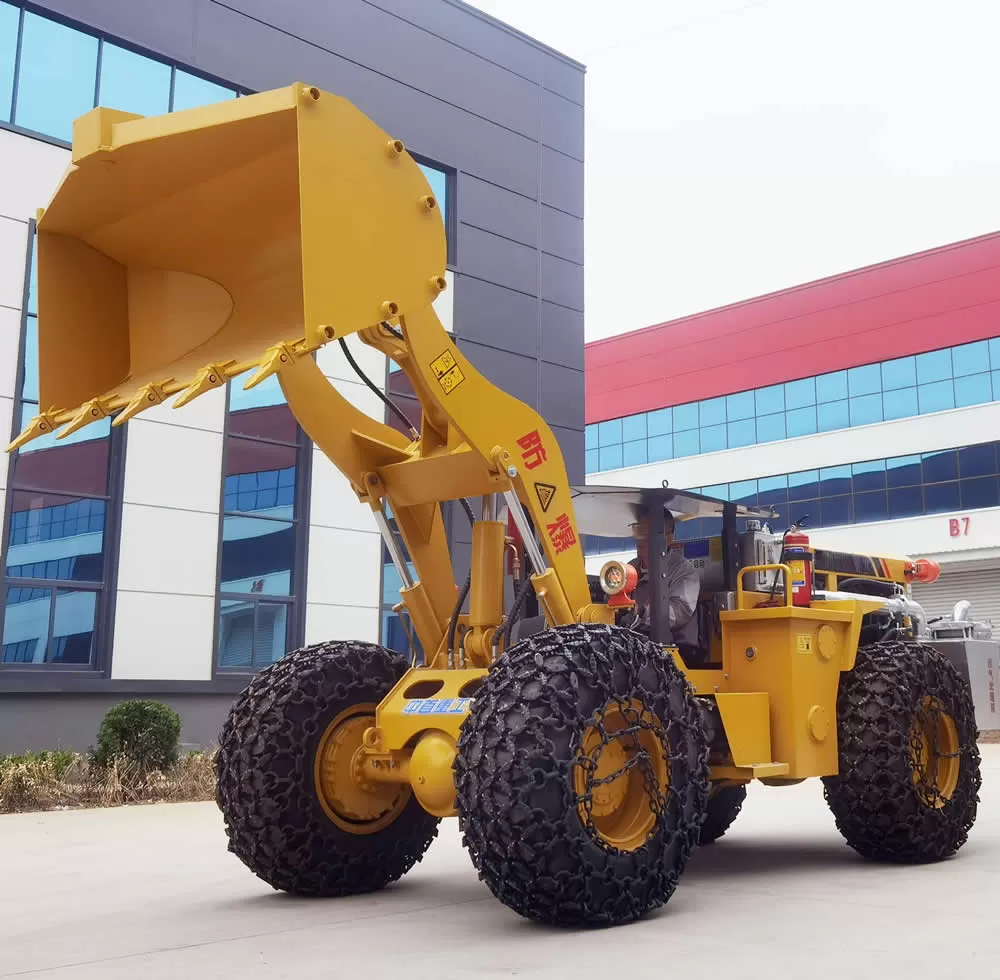
Explosion-proof loaders are specifically designed and manufactured for use in flammable and explosive environments. They utilize multiple explosion-proof measures, including anti-spark coatings, explosion-proof electrical systems, and exhaust/cooling protection systems, to eliminate potential ignition sources and ensure safe operation in hazardous areas.
Anti-spark buckets: For example, stainless steel sprayed with a "spark-proof" coating effectively prevents sparks from mechanical friction.
Explosion-proof electrical systems: These include flameproof enclosures, ATEX/IECEx-compliant electrical equipment that limits electrical energy to prevent explosions caused by sparks or high temperatures, and flameproof motors/controllers that comply with GB3836.
Explosion-proof engines and exhaust: Dust-removing cooling water tanks, flame arresters, and alarm monitoring systems are used to reduce the risk of the engine becoming an ignition source.
Hydraulic system: Anti-static piping and nitrogen inerting.
Mechanical structure: Copper alloy tool kits (bucket/hinges) eliminate sparks.
Explosion-proof loaders are commonly used in the following high-risk operating environments:
Coal mines, tunnels, and underground mining sites: These areas are prone to the accumulation of flammable gases such as coal dust and gas, posing explosion risks to standard loaders.
Combustible dust environments: These include chemical plants, grain silos, and cement plants, which are extremely sensitive to static electricity or sparks.
Hazardous industrial areas such as the oil and gas industry: To prevent gas leaks or flash explosions.
|
characteristic |
Ordinary loader |
Explosion-proof loader |
|
Security |
Sparks and electrical hazards |
Electrical and mechanical design to eliminate ignition sources |
|
Compliance |
No explosion-proof certification |
Usually have ATEX, IECEx and other certifications |
|
Usage Environment |
Limited to safe areas |
Can operate in hazardous areas such as coal dust and gas |
|
Structural costs |
Lower |
Expensive (explosion-proof components, certification costs) |
|
performance |
Standard performance |
Need to maintain performance while increasing security levels |
High Initial Investment
Due to their explosion-proof design and certification, explosion-proof loaders are generally more expensive than conventional loaders.
Maintenance Cost and Complexity
Maintenance requires professionally trained personnel and specialized accessories, significantly increasing maintenance costs.
A common industry experience is that annual maintenance costs for machinery account for approximately 15% of the purchase price.
Long-Term Savings and Return on Investment
Explosion-proof systems can effectively prevent the significant financial losses, legal risks, and downtime associated with explosion accidents, offering a significant long-term return on investment.
With the advancement of electric and battery technology, explosion-proof electric loaders may offer even greater advantages in reducing fuel consumption and maintenance costs.
Applicable Recommendations
Explosion-proof loaders are suitable for use in high-risk environments such as mines, tunnels, and chemical plants, significantly improving operational safety and regulatory compliance. Despite the higher initial investment and maintenance costs, their value in ensuring safety and preventing accidents cannot be ignored.
Maintenance Recommendations
Airtightness testing is mandatory every 500 hours.
Specialized explosion-proof grease costs 15-20% more than conventional products.
Arrange specialized training to ensure that operators and maintenance personnel are familiar with explosion-proof regulations.
Develop a regular inspection schedule, particularly for electrical systems, fire-proof components, and alarm equipment.
Weigh the long-term cost-effectiveness and the impact of accident prevention on company safety and reputation.
If you have any questions about explosion-proof loaders, or want to customize explosion-proof loaders, please contact us.